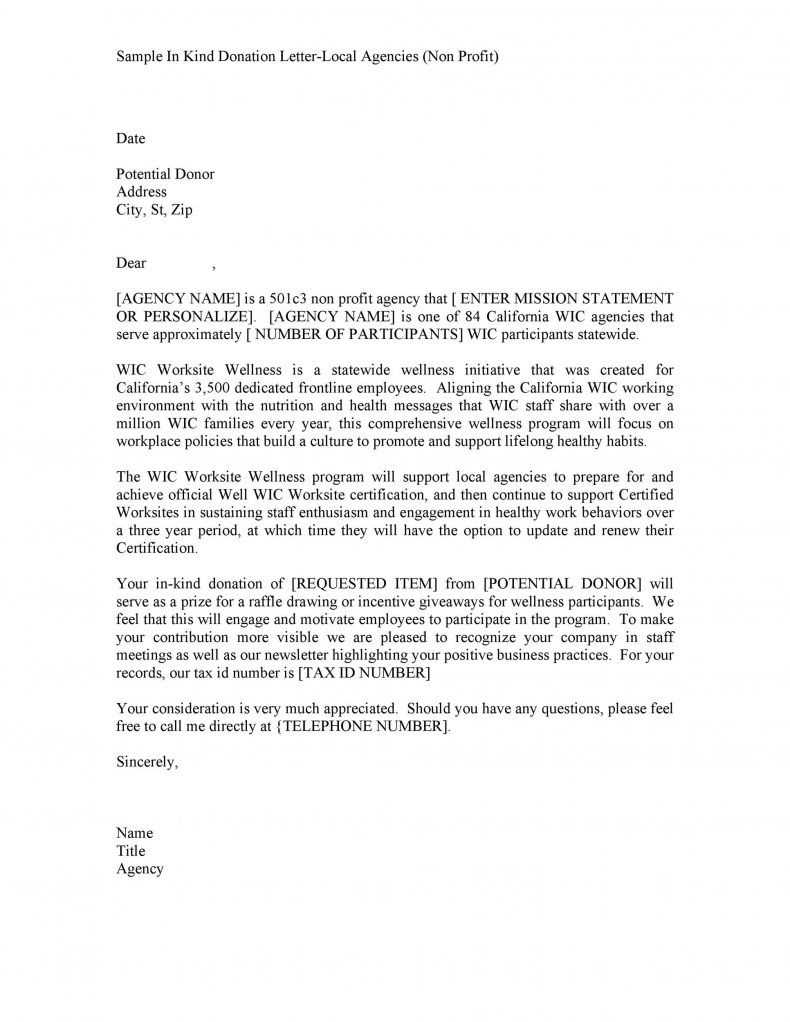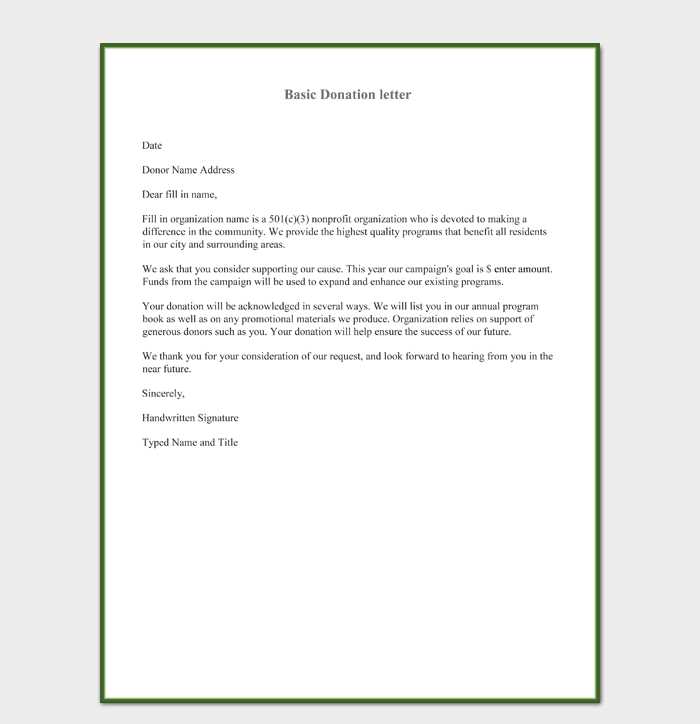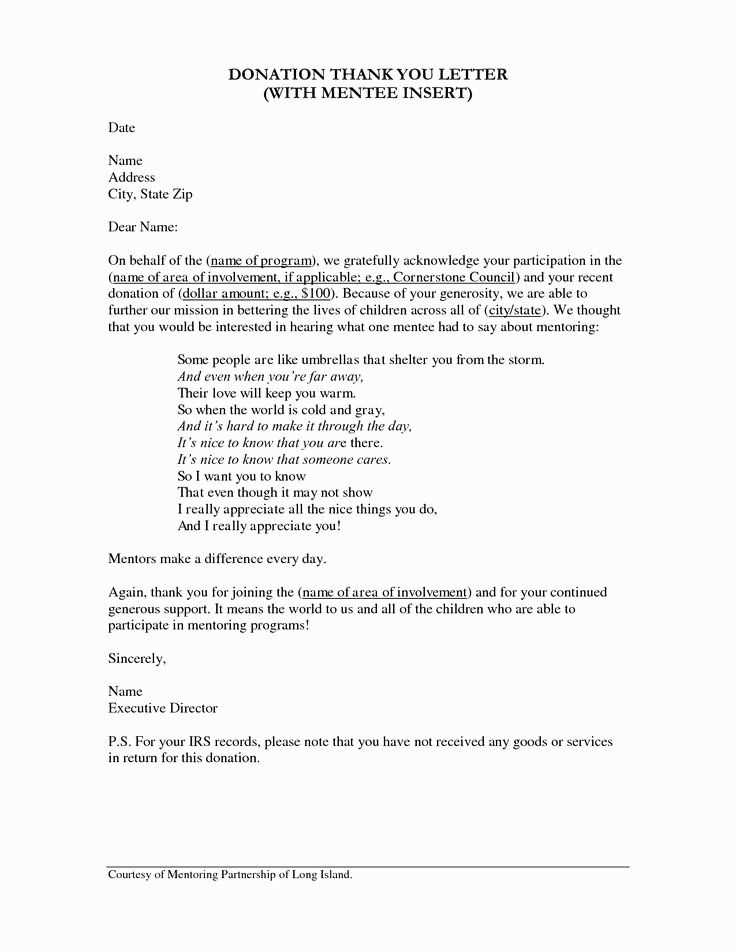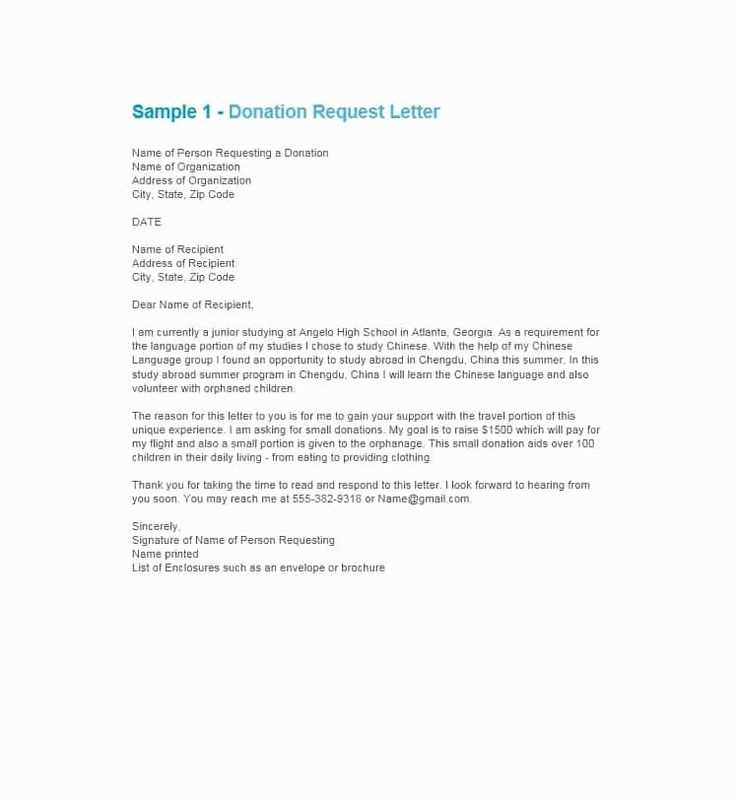How to Write a Donation Request Letter with a Template

When seeking assistance for your cause, the way you communicate your need plays a crucial role in securing the help you require. A well-structured communication can inspire empathy and motivate potential supporters to take action. Whether you’re reaching out to individuals, businesses, or organizations, it’s important to approach the message thoughtfully to make a lasting impression.
Effective communication involves more than just asking for help; it requires presenting your cause in a way that resonates with the reader. By highlighting the impact of their involvement, you create a compelling reason for others to contribute. This process can be broken down into clear, manageable steps that ensure clarity and focus, making it easier for others to respond positively to your appeal.
In this section, we will guide you through creating a persuasive message that enhances your chances of receiving the support you need.
Why a Donation Request Letter Matters
Reaching out for support is an essential step when trying to bring a cause to life or sustain its growth. The way this need is communicated can determine the level of engagement and response from potential supporters. An effective message can capture attention, inspire generosity, and create a sense of urgency, making it a vital tool in any fundraising effort.
Crafting a well-thought-out message allows you to explain your mission clearly, highlight the impact of contributions, and establish trust. Without a structured approach, the appeal might fail to resonate or lack the necessary detail to encourage involvement. It’s more than just making a request; it’s about creating a connection with the recipient and motivating them to be part of something meaningful.
Essential Components of a Donation Letter
To effectively convey your need for support, certain key elements should be included to ensure clarity and engagement. These components not only provide structure but also help to make your appeal more compelling and actionable. By presenting a clear message with all necessary details, you significantly increase the chances of receiving the assistance you seek.
Key Elements of a Strong Appeal

Every successful communication includes several core parts that help the reader understand the purpose and potential impact of their involvement. Below are the critical elements that should be incorporated:
| Component | Description |
|---|---|
| Introduction | Briefly introduce yourself or your organization and explain the purpose of the appeal. |
| Explanation of the Cause | Clearly define the reason for the outreach and why it matters, highlighting the goals and vision. |
| Specific Request | Make your appeal direct, stating exactly what is needed from the recipient. |
| Impact Statement | Describe how the support will make a difference and the outcomes you aim to achieve. |
| Call to Action | Encourage the reader to take immediate action, explaining the next steps and how they can contribute. |
Creating a Personalized Appeal

While the structure remains consistent, personalizing the message to fit the audience is essential. Tailoring the tone, examples, and appeal to the recipient’s values can increase the likelihood of a positive response. A thoughtful approach helps build trust and establishes a genuine connection with potential supporters.
How to Personalize Your Request

Personalization is a powerful tool in making your appeal more compelling. When you address the recipient directly and tailor the message to resonate with their values or interests, it significantly increases the chance of a positive response. A personalized approach creates a deeper connection, making the request feel more genuine and less like a generic solicitation.
Understanding Your Audience
The first step in personalizing your message is to understand who you are communicating with. Research their background, interests, and past involvement with similar causes. By demonstrating knowledge of their values and aligning your goals with them, you show that you’ve put thought into the request. A specific reference to their previous contributions or shared interests can go a long way in creating a meaningful connection.
Adjusting Tone and Language
The tone of your message should also be tailored to the recipient. A formal, respectful tone may be more appropriate for businesses or organizations, while a conversational, heartfelt approach might resonate better with individual supporters. Adapt your language to reflect the nature of your relationship with the person, ensuring that it feels personal and engaging.
Tips for Crafting a Compelling Appeal
To effectively engage potential supporters, it’s important to construct an appeal that captures attention and drives action. A well-crafted message can inspire individuals to act by clearly illustrating the significance of their contribution. Focus on presenting your cause in a way that is both compelling and easy to understand, ensuring that the recipient feels motivated to participate.
Start by clearly outlining the need and showing the tangible impact that involvement can have. A powerful story or real-life example can help illustrate the difference that support can make. Additionally, highlight the urgency of the cause to create a sense of immediate importance.
Being transparent about how contributions will be used is crucial in building trust. Avoid vague language and instead provide clear details about how the support will directly influence the success of your mission. Personalize the message to reflect the recipient’s values and demonstrate why their specific involvement matters.
Common Mistakes to Avoid in Requests
When seeking support, it’s easy to make mistakes that can diminish the effectiveness of your appeal. Avoiding these common errors ensures that your message is clear, professional, and persuasive. Understanding what to avoid allows you to craft a more compelling and impactful communication.
- Being Too Vague: Failing to clearly explain what is needed or how contributions will make a difference can confuse the recipient and reduce the likelihood of a positive response.
- Lack of Personalization: Sending a generic message without acknowledging the recipient’s values or past involvement can make the appeal feel impersonal and less convincing.
- Overloading with Information: Providing too much detail or unrelated background can overwhelm the reader. Keep the message concise and focused on the key points.
- Ignoring the Call to Action: Failing to explicitly tell the recipient how to take action can result in a missed opportunity. Always include a clear and direct next step.
- Using Negative Language: Avoid focusing solely on the problem or using desperate language. Instead, frame the appeal positively, highlighting the potential for change.
Follow-up Strategies After Sending Letters
After sending an appeal, it’s important to follow up to ensure that the recipient has received and considered your message. A timely and thoughtful follow-up can reinforce the importance of your cause and encourage a response. A well-crafted follow-up strategy can improve your chances of receiving the desired support and foster stronger relationships with potential contributors.
Timing Your Follow-up
Sending a follow-up too soon may come across as impatient, while waiting too long could cause the recipient to forget about your appeal. Typically, waiting one to two weeks after the initial communication is ideal. This gives the recipient enough time to review your message without feeling pressured. The timing of your follow-up should be strategic, taking into account the urgency of your request and the recipient’s potential involvement.
Crafting a Polite and Clear Follow-up
Your follow-up should be polite, concise, and respectful. Acknowledge that the recipient may be busy and express appreciation for their consideration. It’s important to reiterate the main points of your original message, reminding them of how their involvement can make a significant impact. Always provide clear instructions on how they can get involved or support your cause if they are interested.